Santa Barbara Solvang and Lompoc
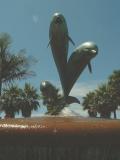
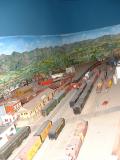
We spent the weekend of the 3rd and 4th of August north of LA - first trip into this area. We arrived in Santa Barbara (2hours north) on Saturday morning to discover that there was a festival happening, so we had a quick look around, and took some photos - the Dolphin sculpture fits well with the coastal atmosphere of Santa Barbara.
We visited the Goleta Railway Museum, which commemorates the impact of the railroad on the local area. There was a little steam train which was fun to ride, and a model railway showing the town as it used be.
We spent the rest of the day looking round Solvang, a little town from Denmark in America - well, it's really a bit of America trying to look like Denmark - all commercial, but quite well done. We looked through lots of shops and admired the buildings.
We ate our dinner in Solvang - the best bit being dessert - a frozen cheesecake slice, which had been put on a stick, and dipped in chocolate! Yummmm :-)
We stayed Sat night in Lompoc (pronounced Lompoke) which is next to Vandenburg Airforce Base where they launch satellites, etc. Lompoc is also known for it's flowers - there are many growers and at different times of year there are huge fields of flowers. We initially thought we couldn't see any, but the trusty Lonely Planet guide to California told us to drive up and down the streets just outside of the town and we saw amazing fields of flowers!
Sunday we went to a restored mission outside Lompoc, founded as Mision La Purisima Concepcion de Maria Santisima (but more commonly known as La Purisima Mission) - these are very interesting (considerably more interesting than we ever imagined) - this one had been very well restored and had furniture as well as gardens and animals.
The missions were set up by the Roman Catholic church along the Californian coast in the late 1700s - early 1800s by Spanish missionaries. Most were abandoned in about 1830 when the Mexican government broke up the missions; California at that time was part of Mexico. Over time they fell into disrepair but have since been restored.
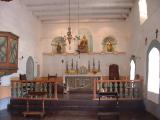
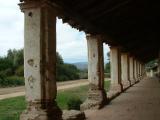
The restoration had been started by the Civilian Conservation Corps in 1934 during the Depression. There were extensive buildings with rooms setup just like they might have been when the mission was a real mission in the late 1700s, early 1800s.
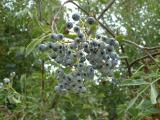
The gardens were large and contained man different plants for food or medicines. There was also yards with farm animals, including Burros (spanish for Donkey), sheep and pigs.
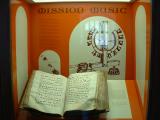
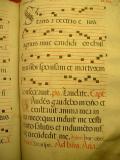
In the museum they had a display of the music that was sung in the mission. What intruiged us was how similar to modern musical notation it was. And it was all hand written.
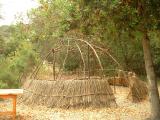
In the gardens there were some shelters that the Chumash lived in. Some were at different stages of construction so that we could see how they were built.
Lompoc also has a museum which had an extensive collection of Chumash artifacts and we spent some time looking round the exhibits and learning about their culture and way of life. The museum also had an exhibit detailing the biggest US Navy accident which occurred off the coast nearby Lompoc when a convoy of destroyers ran aground. They have since put up a lighthouse.
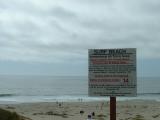
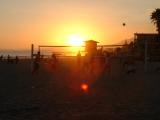
On our way home the freeway was clogged around Santa Barbara and it would have been quicker if we'd been walking. So, we pulled into a small town just out of Santa Barbara and ate fish and chips on the beach watching the locals play volleyball and watching the sunset. It was very pleasant and a lot less stressful than sitting in the car going nowhere!











